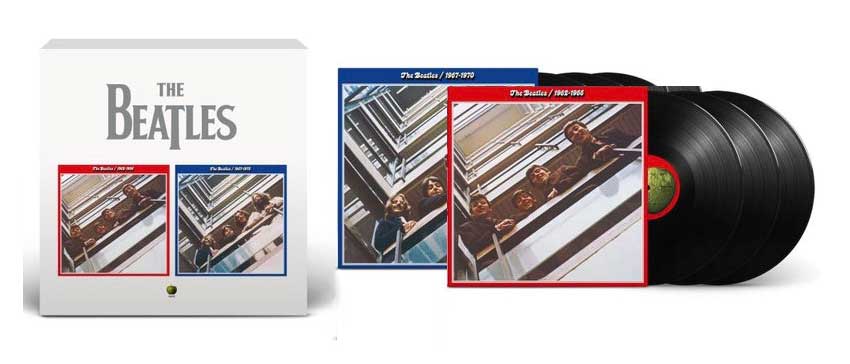You can trust Louder
For that generation born a smidgen too late to experience The Beatles in real time, that hit their teens in the seventies, it was these two brilliantly curated double albums of the Fabs’ finest recordings that hit their collections first. 1962-1966 and 1967-1970, more popularly known as the Red and Blue albums (the first covering the live moptop years, the second the studio-bound era of psychedelia, experimentation and ultimate dissolution) were much-loved staples for prog heads, punk sceptics, powerpop disciples and mod mimics alike. So screw with them at your peril.
Aside from the fact that Giles Martin has transformed the constituent sonics way beyond reasonable expectations (by employing the same AI audio technology developed by Peter Jackson and his team to isolate the Get Back series’ dialogue and effect a full-stereo mix of Revolver), both Red and Blue have been significantly expanded with extra tracks to the extent that they’re both now triple vinyls rather than doubles, with additional tracks chosen to better represent both their Hamburg-forged aptitude as a covers band (Twist And Shout) and George Harrison’s songwriting prowess (Taxman).
Which is fine, and hardly something that’ll spoil anyone’s Christmas but, while these extras are safely tucked away on an extra slab of vinyl, the familiar punch of both sets’ previously faultless sequencing (hit-upon-hit; rapid progress demonstrated perfectly) is sadly lost on the strictly chronological double CD incarnations, by - in one instance - inserting Roll Over Beethoven and You Really Got A Hold On Me between All My Loving and Can’t Buy Me Love.
Whatever, beyond merely looking to fit braces on a gift horse, there’s really nothing wrong here. The sound is truly sensational, most evidently on the Red album. Ringo Starr’s newly enhanced drumming is a revelation while Paul McCartney’s bass finally hits its sweet spot. Guitar subtleties astound and vocal harmonies soar in surprisingly spacious mixes leaving 2009’s stereo remasters sounding weedy, gutless and, quite literally, shocking.
You’ll have all heard miraculously contrived, heartstring-strumming Now And Then by now, which appears on Blue (though, tellingly, there’s no room for previous Anthology-era, after-the-fact headline-grabbers Free As A Bird and Real Love), but its addition’s a mere detail in such exalted company. To be frank, this lot are more than worth your hard-earned cash for the pin-sharp splash of Ringo’s We Can Work It Out crash cymbals alone.
Essential.
Sign up below to get the latest from Classic Rock, plus exclusive special offers, direct to your inbox!

Classic Rock’s Reviews Editor for the last 20 years, Ian stapled his first fanzine in 1977. Since misspending his youth by way of ‘research’ his work has also appeared in such publications as Metal Hammer, Prog, NME, Uncut, Kerrang!, VOX, The Face, The Guardian, Total Guitar, Guitarist, Electronic Sound, Record Collector and across the internet. Permanently buried under mountains of recorded media, ears ringing from a lifetime of gigs, he enjoys nothing more than recreationally throttling a guitar and following a baptism of punk fire has played in bands for 45 years, releasing recordings via Esoteric Antenna and Cleopatra Records.

